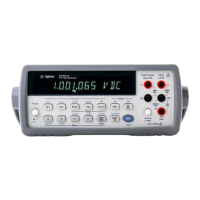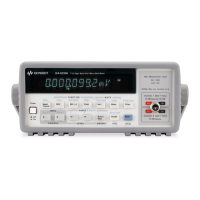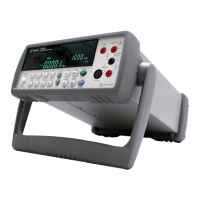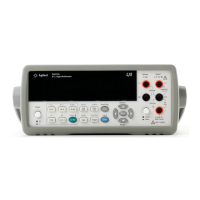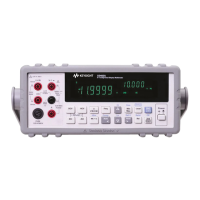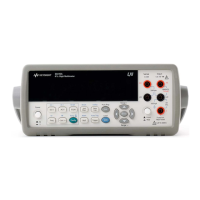Commands vs. Measurement Functions
156 Chapter 6 Command Reference
Commands vs. Measurement Functions
Table 6-1 shows the multimeter commands that apply only to certain measurement
functions. A bullet (
·) indicates the command applies with no restrictions. A
number (1 - 5) indicates the command applies with qualifications (see numbered
footnotes below the table). A blank indicates the command is not applicable to
the measurement function. The remaining multimeter commands not shown in
Table 6-1 apply to all measurement functions with no restrictions.
Table 28: Commands vs. Measurement Functions
DCV DCI OHM
OHMF
ACV
ACDCV
(ANA)
ACV
ACDCV
(SYNC)
ACV
ACDCV
(RNDM)
ACI
ACDCI
FREQ
PER
DSAC
DSDC
SSAC
SSDC
ACBAND
·····
APER
·· · · ·
ARANGE
1
·· · · · · · ·
AZERO
·· ·
FIXEDZ
··
FSOURCE
·
ISCALE?
·· · · · · · 1 ··
LEVEL
· 23··
LFILTER
·····
LFREQ
·· · · ·
(M) MATH
1
·· · · · · · · · 4
MFORMAT
·· · · · · · 1 · 5
NPLC
·· · · ·
OCOMP
·
OFORMAT
·· · · · · · 1 · 5
RATIO
····
SETACV
···
SLOPE
· 23··
SSPARM?
·
SSRC
··
SWEEP
·· · · · · ·
TIMER
·· · · · ·
1. You should not use the SINT or DINT output/memory format for FREQ or PER measurements; when a realtime or
post-process math operation is enabled (except STAT or PFAIL); or when autorange is enabled.
2. Level triggering is the default sync source event for synchronous ACV or ACDCV; however, the level trigger voltage
and the slope are determined automatically and cannot be specified.
3. You cannot use the LEVEL trigger or sample event for FREQ or PER measurements. You can, however, specify the
voltage level and slope that the level detection circuits use to measure frequency or period.
4. You cannot use MATH for sub-sampling; you can use MMATH for sub-sampling.
5. For sub-sampling, when using reading memory, the memory format must be SINT. When not using reading memory,
the output format must be SINT.

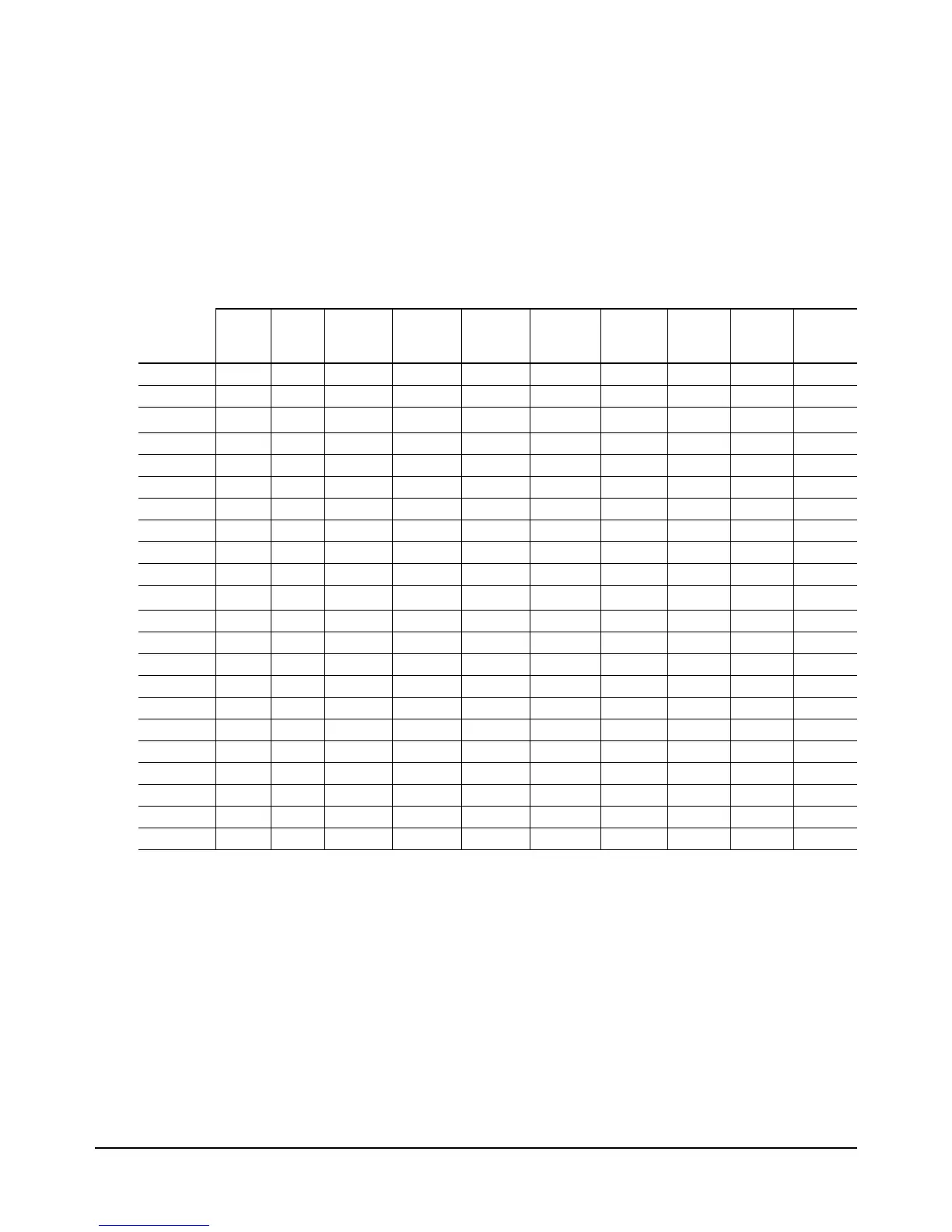